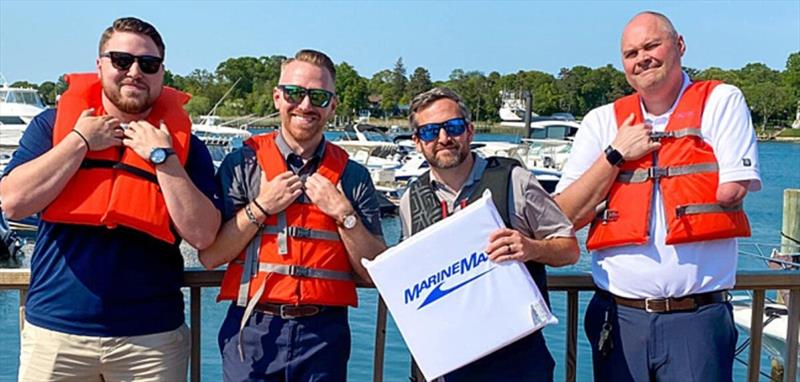
Safe boating is fun boating
by MarineMax 4 Jan 2022 10:09 UTC

Safe boating is fun boating © MarineMax
As we welcome more newcomers to the joy of boating, safety has never been more important. As the recent National Boating Safety Award winner, we also believe boating safety is the key to fun times on the water.
Explore our vast library of boating resources to help you make 2022 a year for safe and happy boating.
Seven tips to know before you go
Owning and operating a boat is an enjoyable and highly rewarding experience, both for the novice and the seasoned boater. To make sure you enjoy a smooth time on the water, here are some things you will want to remember to check before you go. Prepared boating = fun boating!
1. Weather or not
Before heading out, get a full weather report for the time you will be on the water. Always know before you go. Even then, the forecasters are not perfect. Keep an eye on the sky and be aware of building winds and clouds.
2. It's your life
The United States Coast Guard (USCG) and most states require that there be a life jacket for every person onboard. Most boaters are unaware that the USCG requirement goes further. There must be a life jacket onboard that fits each person onboard, and each passenger should be made aware of where they are stored and how to don the device.
3. Over the limit
Boat manufacturers are required to have every model tested by the USCG to determine the load capacity. The manufacturer is required to display a plaque on or near the helm console that states the passenger capacity (including the operator) based on an average 184 pounds per passenger, total weight capacity, (passengers, gear and motor) and horsepower capacity. Make sure to have an idea of the capacity of your passengers and cargo before heading out.
4. Got gas?
Check the fuel line before setting out, and make sure to check fluids every time you leave the dock as well. Two-stroke outboards require oil in the fuel to run properly. Four stroke and inboard engines require lubricating oil. Check the dip stick every time, and cruise to your destination with no worries.
5. Anchors aweigh
Every boat should have a properly sized anchor and amount of rode (the line and gear attached to the anchor) that can hold the boat in place with current and windy conditions. When deployed, the scope of the rode (the amount of line played out) should be at least a 5 to 1 ratio to the depth of the water. As an example: in 10 feet of water, the minimum amount of anchor rode should be 50 feet. Higher ratios, such as 7 to 1, will help the anchor hold more securely.
6. Start in neutral
The boat must be in neutral in order to start. This can be easy to forget since it differs from starting a car. If you need to, leave a note to remind yourself and others to put the boat into neutral before starting.
7. Don't get caught in the dark
Make sure to check your navigation lights before going on the water, even if you're not planning to boat at night. Plans can always change, and if you're out past sunset without working lights, you're putting yourself and other boaters at risk. You are required to display the appropriate lights at night or during times of reduced visibility.
Free boating classes
Being a smart boater is easy with the classes offered by MarineMax: Women on Water®, Kids in Boating, New Owners Workshop, and more.
Find a class here